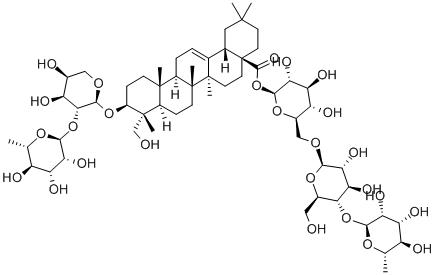India takes the lead in mint export
-
Last Update: 2011-09-14
-
Source: Internet
-
Author: User
Search more information of high quality chemicals, good prices and reliable suppliers, visit
www.echemi.com
India plans to increase its annual output of peppermint crude oil to a new high of 42000 tons between 2011 and 2012 For India, which is already the world's largest producer and exporter of mint extract, it also shows its ambition Until now, China has been the world's largest Mint producer According to the data, China's production, sales and export volume of peppermint oil and menthol accounted for about 50% of the international market at that time The total output of domestic peppermint crude oil once reached more than 8000 tons, and the export volume accounted for about 60% of the output The export price of China's peppermint oil and menthol has been maintained at US $50-60 per kilogram for a long time But it ended when India began to grow mint and produce peppermint oil Since then, China's Mint industry has fallen into a low ebb, and the export of peppermint oil and menthol still cannot be recalled According to the statistics of Beijing Kaitai consulting, in June this year, China's menthol exports totaled 353.113 tons, an increase of 17.61 percentage points over the previous month Since March, China's menthol exports have returned to the growth track; in terms of the total exports in the first half of the year, from January to June, China's menthol exports totaled 2307.085 tons The average export price in June is 28995.291 US dollars / ton, and the cumulative average export price from January to June is 30092.29 US dollars / ton From the perspective of monthly export price, menthol export price fluctuates frequently, generally speaking, the price has increased, but it is expected that China's menthol export will change little in the future A as one of the large trading products in the international market, the price of mint extract has experienced several fluctuations In the late 1950s, the supply of Menthol Extract in the international market was in short supply There was a high price of menthol of more than $80 per kilogram for a long time in the international market This high price has stimulated many Mint producing countries including China to expand the area of mint cultivation With the increase of crude oil production, the price of peppermint fell back to US $30-40 per kilogram in the early 1980s, but the price was still profitable for peppermint growers at that time, so the global peppermint planting area is still expanding Since then, with the global output of peppermint crude oil continues to rise, the world peppermint oil war in the 1990s has been inevitable With its low labor cost and many other advantages, India finally beat the world's major Mint producers and exporters, including China, Pakistan, Sri Lanka, Brazil and Argentina, with a low price of less than $10 per kilogram of mint oil Because the export price of peppermint oil is too low, farmers along the Yellow Sea coast, the main traditional production area of peppermint oil in China, have gradually abandoned the cultivation of peppermint, resulting in a sharp decline in the output of peppermint oil in China Later, with India's agricultural science and technology sector vigorously cultivating new varieties of menthol suitable for India's tropical climate and local soil conditions, and planting them in China, the output and quality of Indian mint oil has been greatly improved since the mid-1990s As China, Pakistan and other big mint oil producers and sellers withdraw from the international market competition, the supply of mint extract in the international market is tightening again In 1997, due to the serious lack of rainfall in the whole rainy season in India, the output of mint decreased and the output of mint crude oil decreased, which made the price of mint oil in the international market soared again to an astonishing $100 per kilogram in that year This high price prompted Argentina, Brazil and other South American countries and Southeast Asian countries that had abandoned mint cultivation to rejoin the ranks of mint growers Even small South American countries such as Paraguay and Costa Rica have begun to join the ranks of mint growing countries However, the good times are not long Indian agricultural research departments have successively cultivated new menthol varieties with higher menthol content, and promoted the cultivation of these new menthol varieties in China Indian menthol oil once again occupied the international market at an ultra-low price Now even though China has always been a major producer and supplier of peppermint oil in the world, it imports 3600-3800 tons of menthol from India every year to meet the needs of various industries in China B natural products occupy the mainstream position According to statistics, in 2008, the total consumption of peppermint oil reached 38000 tons, of which oral hygiene products accounted for 39% of the output of peppermint oil Pharmaceutical preparations and other uses account for 24% of the annual output of peppermint oil in the world, tobacco industry accounts for 17% ~ 18%, and the consumption of peppermint oil in other industries accounts for 19% ~ 20% of the total output of peppermint oil in the world Of course, the peppermint oil market is not smooth It is reported that Japan, Germany and other developed countries have been developing the synthesis of Menthol Products Among them, Japan is the most successful in developing the production of synthetic menthol The annual capacity of synthetic menthol of Gaosha and dezhixin, two major flavor enterprises in Japan, has reached 4500 tons, and the synthetic menthol of these two companies is mainly racemic menthol, whose fragrance is similar to that of natural menthol It is understood that Japan's synthetic menthol products take citronella oil produced in East African countries with low price as the starting material, so the synthetic menthol has a price advantage Bayer company of Germany takes methoxycresol, a cheaper chemical raw material, as the starting material, but its synthesis process is very complex, and its product aroma and other quality indicators are not as good as menthol synthesized from citronella oil Now the synthetic menthol products produced in Japan have successfully entered the American and European markets However, synthetic menthol cannot be used in medicine and food Although Japan, Germany and other developed countries are producing synthetic menthol, India still firmly occupies the international market of Menthol Extract with its all natural menthol and menthol oil products India's commerce department also predicted that the mint oil sales price will be at least 25% higher than the current price this year, reaching 1042 rupees / kg (about 22.61 US dollars / kg) In the past two years, Indian mint oil has been hovering in the international market at the price of 16-17 US dollars per kg By 1996, the content of l-menthol in mint oil exported from India had met the quality requirements of USP, EP and JPD After 2000, the output of menthol in India began to take off In recent years, the annual output of mint crude oil has reached 14000-15000 tons After 2006, the annual output of mint crude oil in India has reached a higher level of 16500 tons, and the average export quantity of mint extract has exceeded 10000 tons Since then, the annual output of mint crude oil in India has increased by 20% every year Last year, India's annual output of peppermint crude oil reached a record 36000 tons despite the devastating floods in some states The total output of peppermint extract reached about 30000 tons, accounting for about 75% of the international market of peppermint products Due to the low price of peppermint oil in the international market in the past few years, the cultivation and production of peppermint in the South Yellow Sea (from Nantong area in Jiangsu Province to the beach in Lianyungang Area) in China has been in a deep depression It is estimated that the annual output of peppermint oil in China is only about 4000 tons, and the products are basically sold domestically According to statistics, in recent years, China imports about 10000 tons of peppermint oil from India every year China has replaced the United States and Japan as India's largest mint oil export market It can be estimated that the annual output of peppermint oil in India accounts for 70-80% of the total output of peppermint oil in the world In the foreseeable future, almost no other country in the world has the same Mint planting area and mint oil production as India India will undoubtedly occupy the dominant position in the international mint extract Market in this century.
This article is an English version of an article which is originally in the Chinese language on echemi.com and is provided for information purposes only.
This website makes no representation or warranty of any kind, either expressed or implied, as to the accuracy, completeness ownership or reliability of
the article or any translations thereof. If you have any concerns or complaints relating to the article, please send an email, providing a detailed
description of the concern or complaint, to
service@echemi.com. A staff member will contact you within 5 working days. Once verified, infringing content
will be removed immediately.







